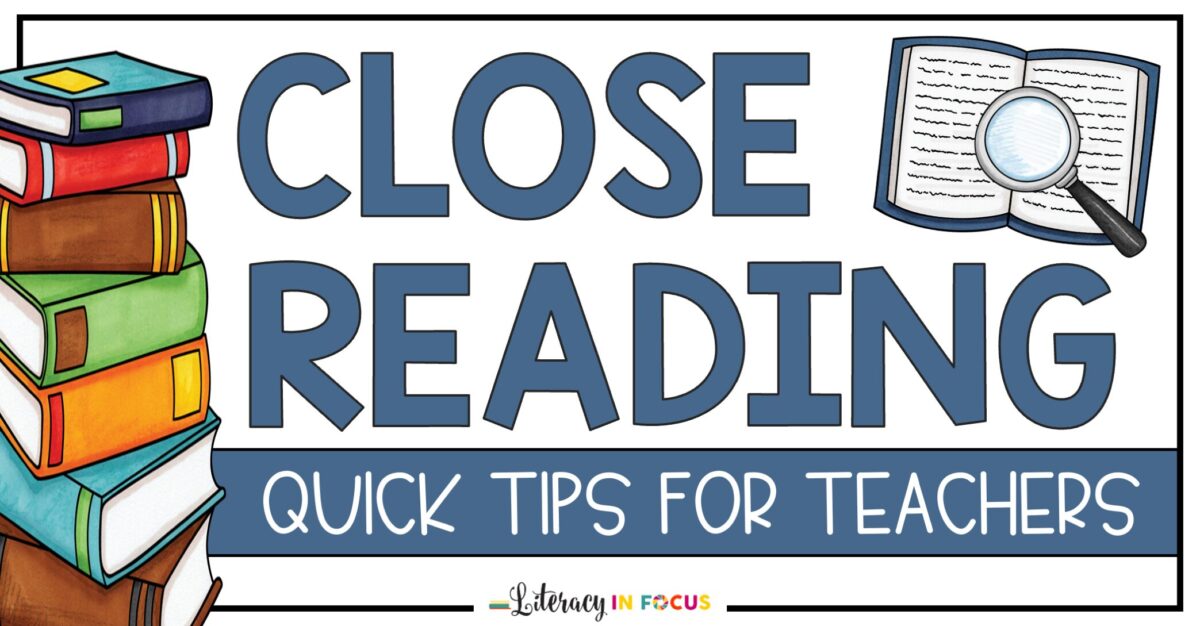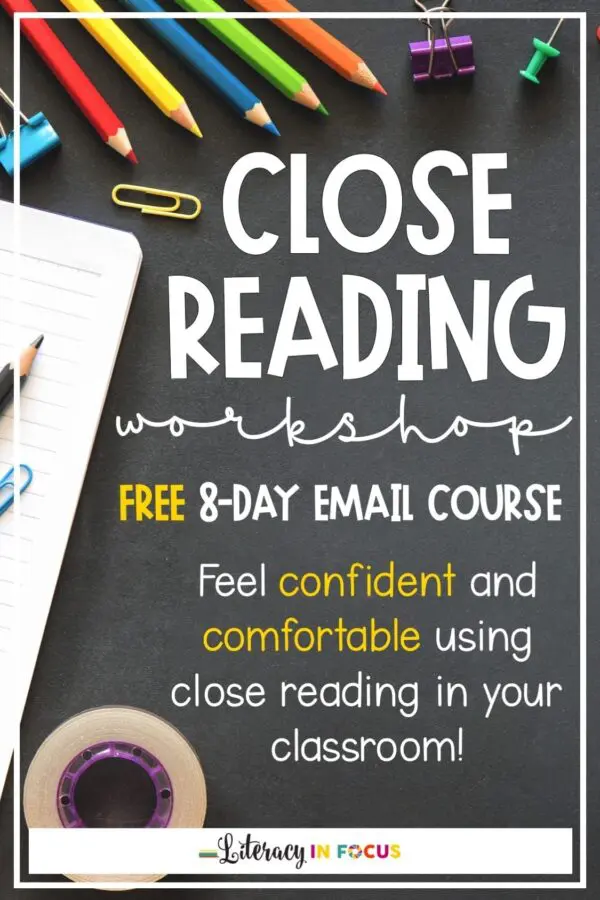
Close Reading Tips for Teachers
Close reading is a strategy that requires critical analysis of a short but complex text. A successful close reading lesson will scaffold student learning and focus on text-dependent questioning and interpretation. When participating in a close reading, students read the text three times. The first reading focuses on key ideas and details, the second reading centers on the craft and structure, and the last reading encourages students to synthesize and apply information learned from the text.
The close reading quick tips listed below are included in the FREE 8-day Close Reading Email Workshop. The workshop includes close reading freebies, exclusive content, and teaching materials you can use right away! Click here to learn more and sign up today!
1. Work with what you have.
If you want students to highlight something in the text, but you don’t have a highlighter for every student, have them draw a box around it, or underline with a colored pencil. When completing a close reading, students need to be able to mark up the page and make it their own. If the text passage you want to use for a close reading is located in a textbook, make a copy of it. If making a copy for each student isn’t an option, you can use these transparency pages or these transparent sticky notes.
2. Less is more.
Remember, short complex texts lend themselves well to the close reading process. You don’t have to use a whole chapter, article, or book to do a close reading. Cut it down and zero in on the most substantial and rigorous portions. Focus on the selection of text that will hit all of your objectives and provide students with opportunities to think critically.
3. Limit metacognitive markers.
Requiring students to annotate the text using metacognitive markers compliments the first reading perfectly. Just don’t overdo it with the amount of text markers students are using. Five or less works well. Discuss the meaning of the markers using examples before students get to work. Display them on the board or use these free close reading bookmarks. Remember, the end goal is for students to think critically while reading without marking up the text. In order to do that, they need consistent practice with the same markers.
4. Filter background information.
It is important to distinguish between the background information required to understand the text and knowledge gained from reading the text. Close reading is a valuable strategy because it teaches students to be active independent learners. Providing students with background information that can be learned from reading and thinking critically about the text limits the close reading process.
5. Text-dependent questions are a must.
Text-dependent questions are critical to the close reading process because they require students to dig back into the text for answers. In order to craft effective text-dependent questions, start with your objectives and work backwards. Think about what you want students to be able to do or understand from the lesson.
6. Don’t overdo it.
A close reading every two weeks or once a month is perfect. The last thing you want is for students to be overwhelmed, bored, or disinterested due to overexposure.
7. Avoid gaps in instruction.
While taking several days to complete a close reading is okay, anything more than that will disrupt comprehension and may lead to confusion. A great option is to complete the three readings of the text in one sitting, and then move on to an extension activity that may require additional time to complete. For example, after completing the third reading of the text and corresponding activities, you may implement an in-depth writing activity that will require several more days of instruction.
Click Here to Download the Close Reading Lesson Bundle
Wow! My kids really loved using this resource! They loved the texts that were used and were actively engaged in the activities provided. Thank you! -Misty P.
This post contains affiliate links. Click here to read my affiliate policy.




